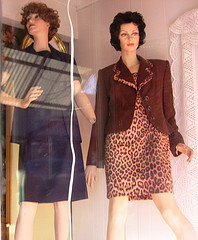Where Do All Your Used Clothes Ultimately End Up?
When you clean out your closet and fill up a bag to donate to Goodwill or the Salvation Army with stuff that no longer fits or you just don’t want, it might be the end of your time with those high-waisted jeans or Barenaked Ladies concert tee. But it’s just the beginning of a long, winding path that can terminate thousands of miles and an ocean away.
Slate has an excerpt from the new book Overdressed: The Shockingly High Cost of Cheap Fashion, where author Elizabeth L. Cline visits a few stops along the secondhand clothes highway.
First up is a Salvation Army in Brooklyn that also acts as a sorting and distribution center for eight Salvation Army locations in the area.
In a back room, dozens of women sort through an average of five tons of new arrivals every day. Out of that mountain, they can select exactly 11,200 garments, which are then distributed to among the affiliated Salvation Army stores.
“We never run out of clothes,” an assistant supervisor at the center tells Cline. “There are always enough clothes.”
Rejected clothes are then taken into a separate warehouse and pressed into half-ton bales. Cline says that just this one Salvation Army center churns out 36 of these bales on an average day.
These bales then go to any of the thousands of textile recyclers in the country who once again sift through the donated clothes to pull out still wearable items — and the occasional vintage gem that has gone unnoticed.
Cline visited one processor in New Jersey that takes in around 17 million pounds every year.
“I like to call it the good, the bad, and the ugly,” says the company’s president. “We get everything from torn sweaters to spoiled and stained towels to good useable clothing.”
And it’s the “good” portion of that trinity that then gets sorted, shrink-wrapped and baled for sale to used-clothing companies, many of whom then sell the garments overseas.
“[B]y one estimate, used clothing is now the United States’ number one export by volume, with the overwhelming majority sent to ports in sub-Saharan Africa,” writes Cline.
Even when the clothing reaches the shores of some other country, it’s not necessarily the end of the road, as used-clothing customers aren’t just blindly snapping up the clothes you no longer want. As economies develop and customers become more worldly, they are also becoming more selective about their purchases.
Asks Cline:
As incomes rise in Africa, tastes become more savvy, cheap Chinese imports of new clothes flood those countries, and our own high-quality clothing supply is depleted, it’s foreseeable that the African solution to our overconsumption may come to an end. What then?
Want more consumer news? Visit our parent organization, Consumer Reports, for the latest on scams, recalls, and other consumer issues.


